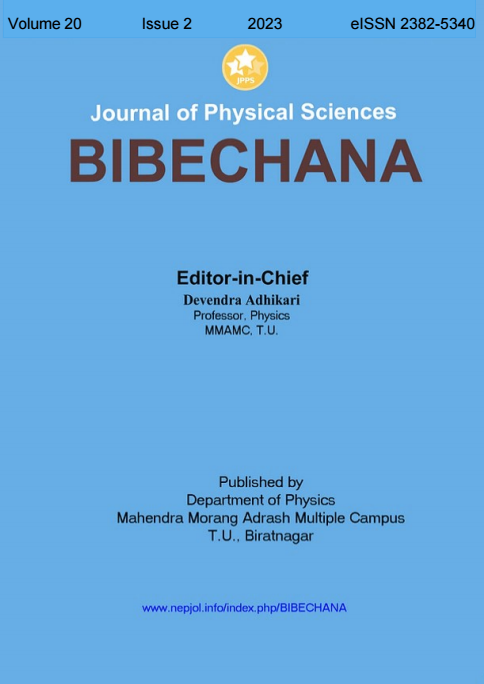Biochemical, Antimicrobial, and Antioxidant activities of some wild Mushrooms from Nepal
DOI:
https://doi.org/10.3126/bibechana.v20i2.54887Keywords:
Wild mushroom , Phytochemicals, Antioxidants, AntimicrobialAbstract
Wild mushrooms represent a crucial dietary staple for many tribal groups throughout the world since they consist of a significant source of bioactive constituents such as phenolic compounds, tocopherol, and act as anti-cancer, anti-allergic, anti-obesity, anti-inflammatory compounds, etc. Wild mushrooms including Scleroderma citrinum, Heterobasidion annosum, Coriolus hirsutus, Cavimalum indicum, Russula sanguinea, and Suillus punctatipes were studied to evaluate their phytochemical constituents, antimicrobial activity, antioxidant activity, toxicity and its importance as a source of food along with safety concerns. Initially, the total flavonoid content (TFC), total phenolic content (TPC), and total tannin content (TTC) along with antioxidant, and antimicrobial activity were assessed using ethanolic extracts of fungus. Furthermore, a Brine shrimp bioassay was performed, the correlation of which with antioxidant activity, TPC, TFC, TTC, and lethal concentration (LC50) value was shown by principal component analysis (PCA). Secondary metabolites like glucosides, flavonoids, polyphenols, alkaloids, terpenoids, saponins, and quinones were identified using phytochemical investigations. The TPC ranged from 45.98 to 102.3 mg GAE/g for the extracts, TFC from 100 to 225 mg QE/g, and the TTC was found to vary between 80 to 180 mg GAE/g. The findings of the antioxidant studies demonstrated that S. punctatipes exhibited the highest antioxidant activity (IC50 = 16.95 µg/mL), followed by C. indicum (IC50 = 22.5 µg/mL), and C. hirsutus (IC50 = 35.34 µg/mL). Likewise, S. punctatipes exhibited strong antimicrobial activity as compared to other extracts. The larvicidal efficacy against brine shrimp tests revealed that three mushrooms; C. hirsutus, C. indicum, and S. punctatipes—contain highly toxic substances while the other three are non-toxic and when properly examined can be consumed to some extent.
Downloads
Downloads
Published
How to Cite
Issue
Section
License
Copyright (c) 2023 Pratiksha Chaudhary, Nabin Panth, Bimal Kumar Raut, Nisma Pokhrel, Nita Shrestha, Sajan Shakya, Bijaya Thapa, Akkal Dev Mishra, Niranjan Parajuli

This work is licensed under a Creative Commons Attribution-NonCommercial 4.0 International License.
This license enables reusers to distribute, remix, adapt, and build upon the material in any medium or format for noncommercial purposes only, and only so long as attribution is given to the creator.




